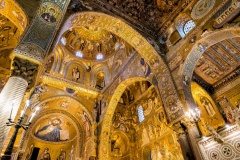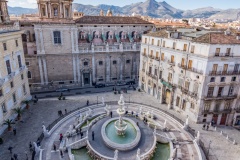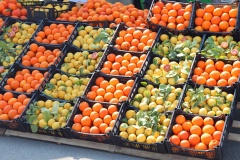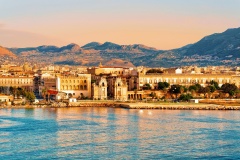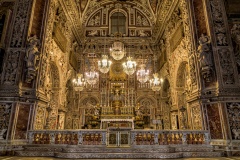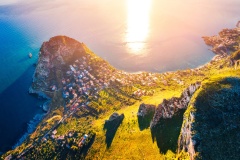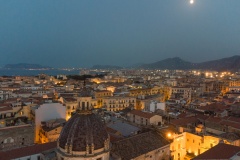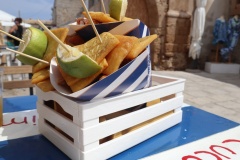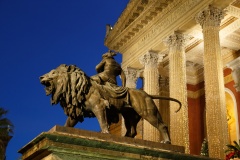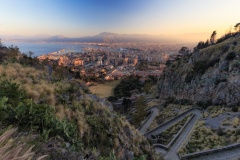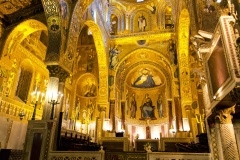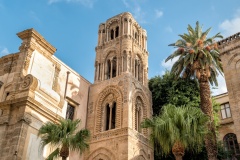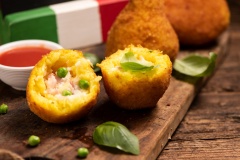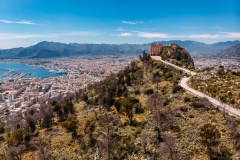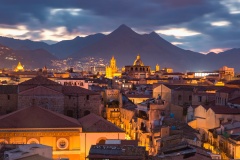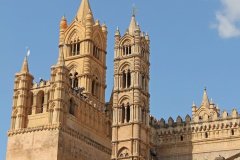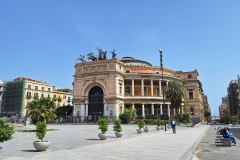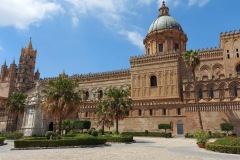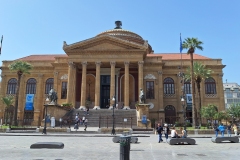Palermo, capital of the Region of Sicily, stretches over the Conca d’oro at the foot of Mount Pellegrino and overlooks the Tyrrhenian Sea.
Palermo was founded by the Phoenicians nearly 3,000 years ago with the name Ziz (flower). The city was conquered by the Romans who gave it the name Panormus (from the Greek, all port). Throughout its thousand-year history, Palermo has become a splendid mix of art, including remains of Punic walls, Art Nouveau villas, Arab-Norman residences, Baroque churches, and neoclassical theaters.
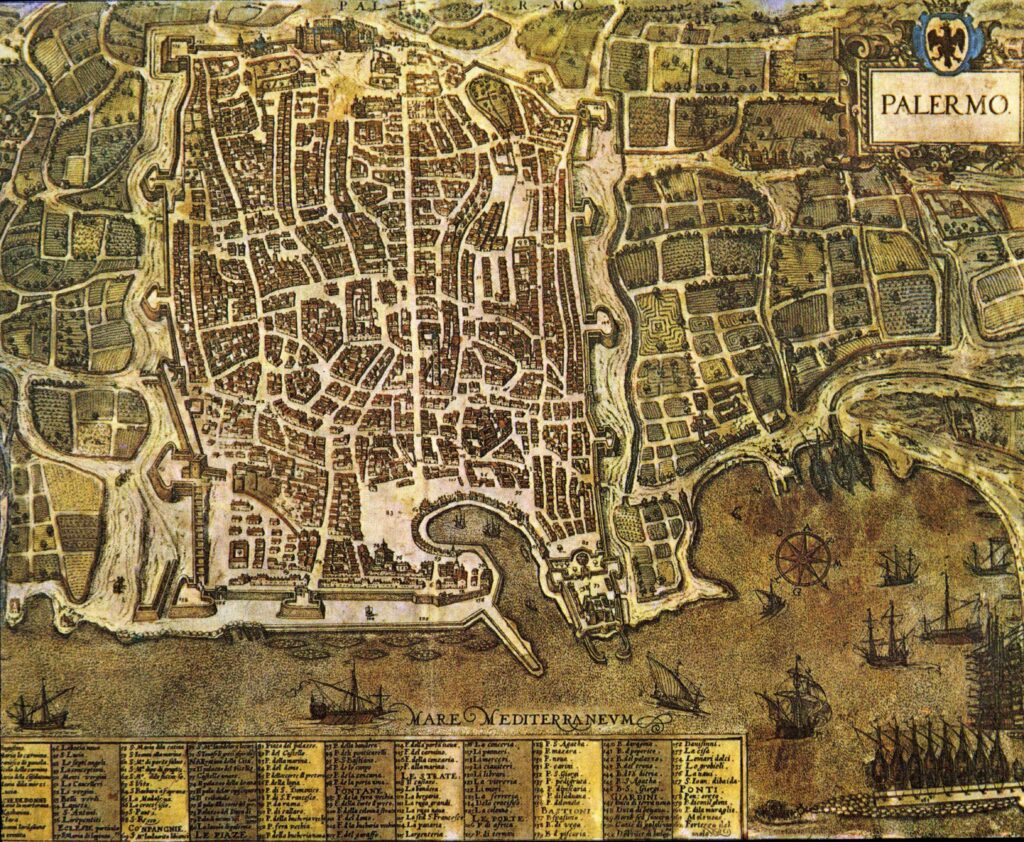
The city’s happy period began under Arab rule (9th century AD). when it became one of the main Islamic centers in the West. The city expanded and new urban neighborhoods sprang up beyond the confines of the historic center known as the Cassaro (from the Arabic Al Quasr, the castle, also the ancient name of the main street, now Corso Vittorio Emanuele). In particular, near the outlet to the sea arose the Kalsa (from al Halisah, the elect), a fortified neighborhood and residence of the emir.
In 1072, the city fell to the Norman Count Ruggero, but merchants, artisans and more generally the Muslim population (as well as those of other races and religions) were allowed to continue to live and practice their professions. It is precisely this that allows the spread of the style later called Arab-Norman, a beautiful mixture of both architectural and decorative motifs.
The city prospered and was enriched by the contributions of different cultures. Ruggero II, son of the “count,” a lover of luxury, gave birth everywhere to gardens of oriental style with luxurious palaces (the Zisa, the Cuba) and surrounded himself with men of letters, mathematicians, astronomers and intellectuals from all over.
After a brief period of turmoil and decadence, Palermo and Sicily passed into the hands of Federico II of Svevia (1212), under whom the city regained centrality and vigor. There followed the Angevins, driven out at the end of the so-called War of the Vespers, the Spanish and, in the 1700s, the Bourbons of Naples, who dressed the city in Baroque palaces.
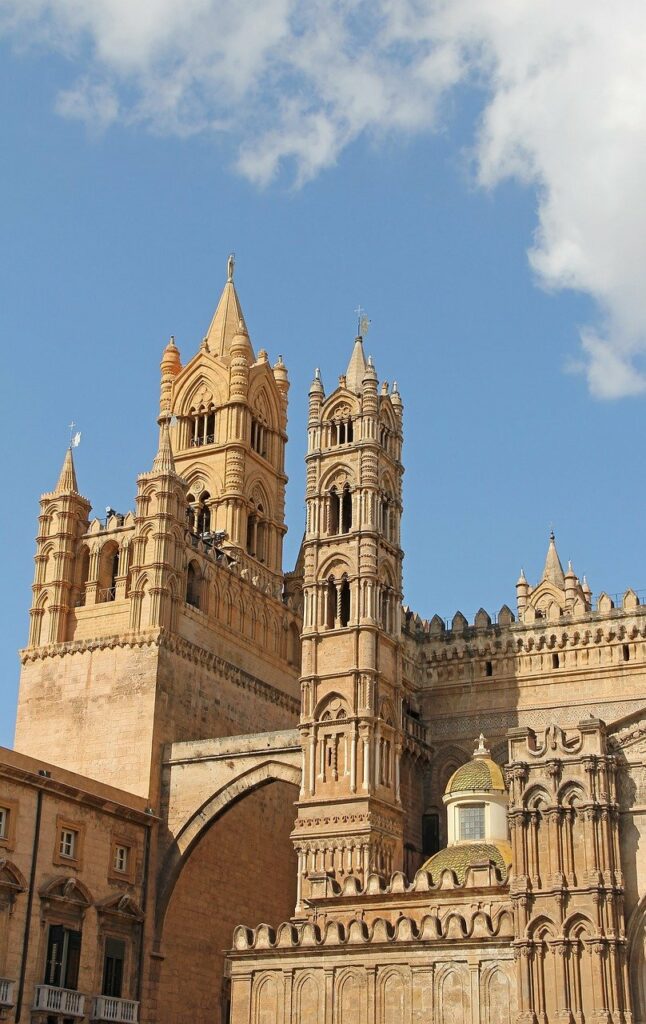
The 19th century marks the opening of the city to trade and relations with Europe, and the city expands its borders. The Viale della Libertà, a continuation of Via Maqueda, is inaugurated, and the neighborhood around it is enriched with Art Nouveau creations. And it is unfortunately the last flush, followed by a period of stagnation that saw the bombings of the last war, the 1968 earthquake and a slow but corrosive deterioration of the medieval neighborhoods. Today, however, a new impetus for revaluation, restoration and reuse of the center’s magnificent monuments is trying to reawaken this magnificent, still sleeping giant of the East.

